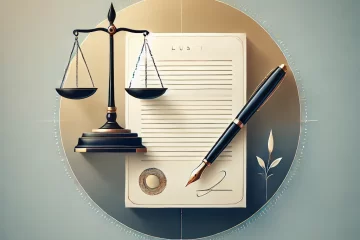![]()
“Lawyers and painters can turn white to black”
Japanese Proverb
Introduction:
As the proverb above mentions ‘Lawyers and painters can turn white to black’ is the most accurate saying applicable to the profession of law. Law is one such field where one move can change the whole scenario in a particular matter and how it is done in court is what makes lawyers successful. One has to excel at impressively presenting the case along with the appropriate law and the logic behind it. This is the key to the success and win of any case. One such important skill apart from verbal and orating skills is drafting.
What we call legal drafting is writing or drafting legal documents such as pleadings deeds agreements notices contracts. A document is said to be perfectly drafted when the nexus between the issue, the law, and the facts are found. The skill of draftsman, knowledge of the issue, law appropriately needed, language which puts all the facts, issues, and solutions in a proper manner and systematic sequence to present it all correctly. If anyone factor is loosely handled the draft does not hold the quality it should pertain to get the appropriate outcome expected.
The presentation of legal status, rights, and duties of the party, terms, and conditions should be apt and unambiguous.
To draft all the above-mentioned facts into a document requires serious thinking with prompt action to reduce the information into writing with legal meaning to it which also must be open for judicial interpretation and should be of the same sense and intention of the parties.
Legal Drafting Tips
- The Purpose should be Clear
The object and purpose of the document should be clear to the draftsman. What is the document made for? Whether to advise or remind or to complain. If the purpose is unknown and not clear in the draft how can one achieve it?
- Language
The language and words used to structure the document should be neat and precise. The choice of words should be such which are unambiguous and on point. Legal proverbs and Latin phrases should only be used when the meaning and interpretation of those are crystal clear and should not just be added to glitter it without making any sense.
- Sequence
The order or sequence of the draft should be logical. When a draft is properly organized it becomes easy to understand the timeline of the events and nulls the confusion. Separate all the points which are independent of each other.
- Always use Active voice
Active voice should be included in drafting to avoid the confusion in the language. Passive voice makes the sentences only longer giving it the ambiguity which should be avoided.
The passive voice is appropriate when the actor is not known or is obvious, and lastly avoid negatives in sentences.
- Edit
Editing is a must while preparing any draft. Read, re-read and read some more before sending in the draft. When the draft is completed a good possibility arises as to some points that might slip your mind to include which later turns out to be a mistake to avoid the same always read and search for the grammatical and punctuational errors.
- Consistent Description
Always keep your draft and content description minimal and simple for each section of the legal document. Using synonyms would mean and depict the same meaning but might make the document confusing. Avoid using many varied words or thesaurus of words to denote the same meaning.
- Do not copy-paste
Do not just fill in the facts in the format. It takes away the uniqueness of the draft and becomes monotonous. Every case is different from others even if it may seem like it. There are always some clauses and laws which are different and have to be presented differently if not done so it can make the document hard to interpret. Hence the draft should be properly drafted.
Key Takeawys
- Write your document by keeping it in mind that it might end up in front of a judge. It always impacts the decision of the judge on the case. That’s when the language sequence and other factors come in.
- Read every document thrice before submitting and proofread if needed.
- Use shorter and simple sentences than composing a long and complex sentence.
- Know your audience. The client’s wants should be clear to draft the same in the document. If the client is not clear with what it wants it is the responsibility of the draftsman to compile it from him and draft the document accordingly.



0 Comments